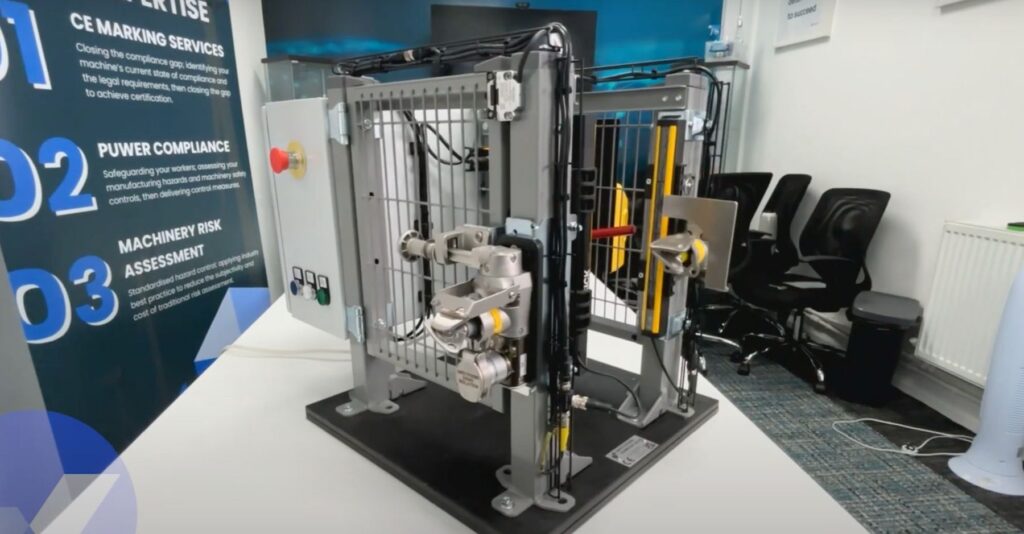Risk assessment is crucial for ensuring safety in industrial operations. It helps identify potential hazards and determine the best ways to control or eliminate them.
However, traditional risk assessment methods often involve a level of subjectivity, which can lead to inconsistencies and debates. This subjectivity is especially present when using common tools like 3×3 or 5×5 risk matrices. These matrices, while helpful, can lead to varied interpretations and extended discussions. One way to bring more objectivity to the risk assessment process is by using harmonised standards.
The Challenge of Subjectivity in Risk Assessment
Risk matrices, like the 3×3 or 5×5, are often used to assess the likelihood and severity of potential hazards. However, these tools can be subjective. One person might rate a risk as “moderate,” while another might see the same risk as “high.” This subjectivity can lead to lengthy discussions and increased costs.
In my experience overseeing risk assessments, I found that annual reviews often involved re-evaluating past decisions. I would question whether the likelihood of an event had changed, even if the process had not. This highlighted the need for a more objective approach.
The Role of Harmonised Standards in Risk Assessment
Harmonised standards, recognised by the European Union (EU) Commission, offer a framework that enhances the risk assessment process. These standards meet the requirements of the Machinery Directive, which manufacturers must follow. By using harmonised standards, businesses can ensure that their risk assessments are more objective and align with legal requirements.
One major benefit of harmonised standards is that they include sections that identify significant hazards in different types of machinery. For example, EN 619 is a standard for conveyor belts. It provides a list of potential hazards and their locations, such as crushing hazards at crossover passageways.
Practical Application: Using EN 619 for Conveyor Belt Safety
Let’s look at how EN 619 can be used in risk assessment. EN 619 not only identifies hazards but also provides specific controls to address them. This makes it a valuable tool in the risk assessment process.
Consider a walkway that crosses over a conveyor belt. According to EN 619, this setup poses a crushing hazard. The standard provides guidance on how to mitigate this hazard. It suggests assessing the hazard based on factors like the speed and frequency of the conveyed load and how often people use the walkway.
EN 619 specifies that a crossover passageway is safe if there is a minimum of four seconds between the time a person can see the moving load and its arrival at the passageway. This allows enough time for people to cross safely. The standard also recommends that roller conveyors have a minimum infill plate of 0.1 meters between the rollers, with an anti-slip covering, and a total width of at least half a meter.
These guidelines remove the guesswork from the risk assessment process and provide a clear method for mitigating hazards. The standard even includes diagrams to visually represent the required safety measures.
Benefits of Using Harmonised Standards in Risk Assessment
Using harmonised standards in your risk assessment process offers several benefits:
- Objectivity: Harmonised standards provide clear criteria for identifying and mitigating hazards, reducing subjectivity.
- Compliance: Following harmonised standards ensures that your machinery complies with EU regulations, providing legal protection.
- Best Practice: These standards represent best practices, developed by experts and based on extensive research.
- Efficiency: Using harmonised standards streamlines the risk assessment process, saving time and reducing costs.
- Safety: Ultimately, harmonised standards lead to safer working environments by providing detailed, actionable steps for mitigating risks.
Finding and Implementing Harmonised Standards
The European Commission provides resources to help manufacturers find and implement the right standards for their machinery.
Start by visiting the European Commission’s website and searching for “EU harmonised standards.” You can download a list of harmonised standards in Excel format. Once you have the list, search for the standards by their reference numbers or titles. For instance, if you are dealing with conveyor belts, look for “continuous handling equipment”. The Excel file allows you to search through the titles of standards, which is useful if you’re unsure of the exact standard you need.
After identifying the relevant standards, download or purchase the full text from authorised sources. This will provide you with all the technical details needed to ensure compliance. Implementing these standards may require collaboration with engineers, safety officers, and other stakeholders.
Strategic Importance of Harmonised Standards in Risk Management
Harmonised standards are not just regulatory requirements—they are strategic tools that can enhance your risk management framework. By integrating these standards into your risk assessment process, you align your operations with industry best practices and legal requirements, all while promoting safety and compliance.
At Knox Thomas, we understand the complexities of machinery safety and the critical role harmonised standards play in ensuring safe operations. We work closely with our clients to navigate these standards, offering expert guidance and support. Our goal is to help businesses not only comply with regulations but also achieve the highest safety standards.
Conclusion
Harmonised standards are essential guides that bridge the gap between regulatory compliance and effective risk management. They provide a structured, objective approach to hazard identification and mitigation, ensuring that machinery is designed and operated safely. By incorporating harmonised standards into your risk assessment process, you can reduce subjectivity, enhance compliance, and protect the health and safety of your workforce.
Whether you are designing new machinery, conducting safety assessments of existing equipment, or reviewing your overall safety practices, harmonised standards should be a key component of your risk management strategy.
At Knox Thomas, we are committed to helping our clients understand and implement these standards, ensuring that their operations meet the highest safety and compliance benchmarks.




